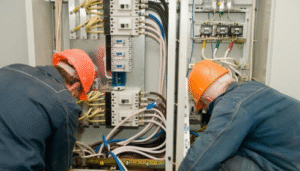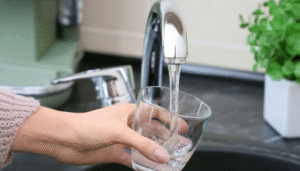There’s something oddly satisfying about turning on a faucet and getting that strong, steady stream of water. You might not think twice about it, but behind that effortless flow is a quiet, complex system doing some serious heavy lifting. From showers that stay powerful even when someone’s using the washing machine, to irrigation lines that feed entire gardens evenly—none of it happens by luck. It’s all about how water pressure systems are designed and managed.
Good water pressure isn’t just a luxury—it’s a sign that your system is balanced, efficient, and built to last. And when it’s not? You notice. Low pressure can turn a quick rinse into a frustrating trickle, while high pressure can strain your plumbing and wear out fixtures prematurely. So, how does a well-designed setup strike that perfect balance between too little and too much?
At the heart of it all lies a combination of technology and physics—pumps, valves, and pressure-regulating devices working together like an orchestra. A pump pushes the water, but what keeps it consistent are the hidden heroes of the system: the pressure tanks. These components are what ensure your morning shower feels the same even when the dishwasher kicks in.
If you’ve ever opened a maintenance room or peeked behind a water supply setup, you might’ve seen a large cylindrical tank with pipes connected at odd angles. That’s a pressure tank, and it’s far more important than it looks. In simple terms, it stores pressurized water to reduce the workload on your pump and maintain consistent pressure. Among these, hydropneumatic tanks are perhaps the most common—and for good reason.
Hydropneumatic tanks operate using a clever balance between air and water. As the pump pushes water into the tank, it compresses the air inside. That compressed air then acts like a spring, pushing water out at a steady rate when you open a tap. The result? Fewer pump cycles, more efficiency, and a smoother experience all around. Think of it like a buffer zone—it absorbs the system’s highs and lows, making sure you don’t feel every fluctuation.
But these tanks don’t just stop at pressure control. They also play a key role in energy conservation and system longevity. A pump that’s constantly switching on and off wears down quickly. By minimizing those cycles, hydropneumatic systems help your equipment last longer, save energy, and reduce maintenance costs. It’s one of those silent investments that pays off in years rather than days.
Of course, as with most things in engineering, evolution doesn’t stop. The traditional air-over-water design of hydropneumatic tanks works well—but it has its quirks. Over time, air can dissolve into the water, leading to a loss of pressure balance and frequent recharging. That’s where modern bladder tanks step in to refine the process.
Bladder tanks are like an upgrade to the classic design. Instead of letting air and water mix freely, they keep them separated using a flexible internal bladder or diaphragm. When the pump fills the tank, the bladder expands, compressing the air on the other side. This prevents the air from dissolving into the water, meaning the system holds its pressure longer with less maintenance. It’s cleaner, quieter, and more reliable—qualities any homeowner or facility manager would appreciate.
What’s fascinating about bladder tanks is how they make complex fluid dynamics feel so simple in practice. They keep pressure steady, protect the pump, and ensure the whole system runs smoothly. You don’t have to think about it. You just turn the tap, and it works. That kind of reliability is what defines good water system design—it feels invisible until it isn’t.
But here’s the thing: no matter how advanced your setup is, no system is truly “set and forget.” Routine maintenance still matters. Air charge levels should be checked, bladders inspected, and pressure switches calibrated to ensure they’re functioning correctly. It’s a bit like maintaining your car—you don’t wait for a breakdown to check the oil. Regular inspection helps prevent costly surprises.
And then there’s the installation factor. Even the best tank in the world can’t save a poorly designed system. Sizing, placement, and matching the right tank with the right pump are crucial steps that often get overlooked. Undersized tanks can cause rapid cycling, while oversized ones might lead to unnecessary expense. The key is balance—just enough capacity to handle your demand without overburdening the equipment.
Professionals who design and install water pressure systems know this dance well. They consider factors like elevation, distance, demand peaks, and even future expansion before selecting the right configuration. It’s part science, part experience. When done right, the result is a system that feels effortless from the user’s end—steady water pressure, quiet operation, and minimal maintenance.
It’s funny how something as simple as water flow can have so much going on behind the scenes. For most of us, the goal is comfort and reliability—we want water when we need it, with the right pressure, and without worrying about the mechanics behind it. Yet, understanding how it all works gives a new appreciation for those steel tanks and the engineers who designed them.
Whether you’re running a household, managing a commercial building, or maintaining an agricultural setup, consistent water pressure isn’t just convenience—it’s functionality, efficiency, and even safety. The next time your tap delivers that perfect stream of water, take a moment to appreciate the unseen network of pipes, pumps, and tanks working tirelessly in the background.
Because at the end of the day, good water systems aren’t just about plumbing—they’re about precision. About creating harmony between pressure, flow, and design so that something as everyday as water feels simple again. And that, in itself, is a quiet kind of genius.


